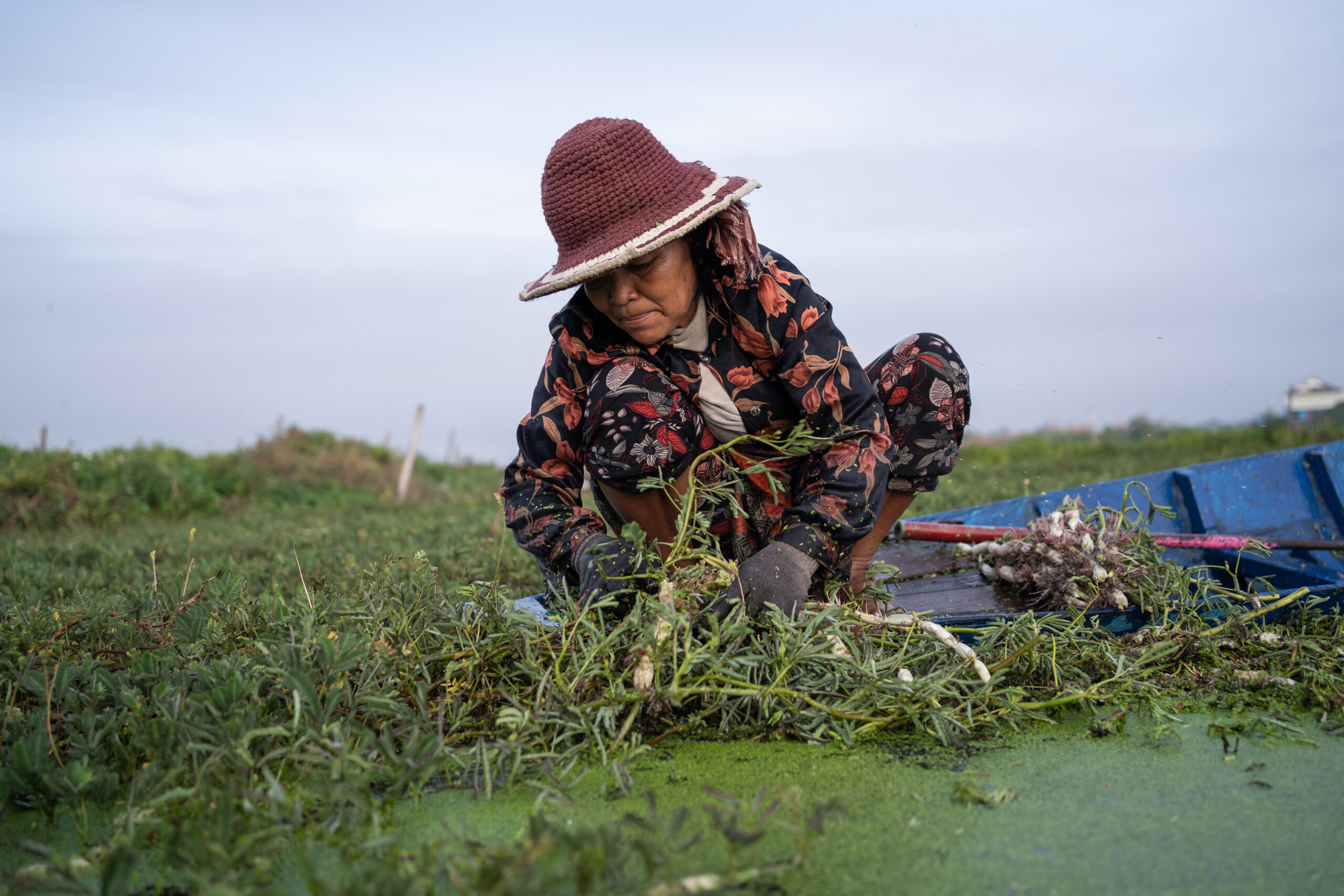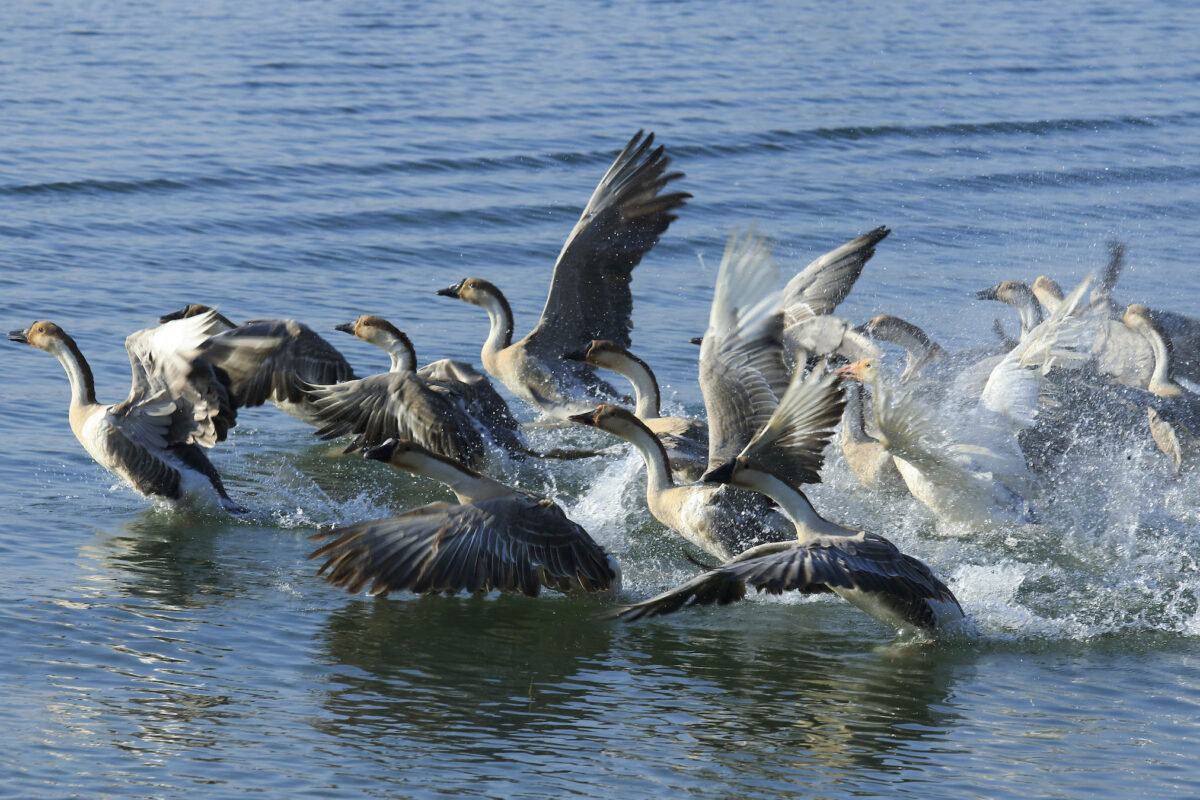- In July, scientists, government officials and community leaders gathered in Zimbabwe for the 2025 international conference on wetlands to agree on global commitments for the sustainable conservation and restoration of these ecosystems.
- The conference adopted a series of resolutions and agreements, including one on the protection of migratory birds and wetland-dependent species, as well as the Fifth Strategic Plan, which aims to halt and reverse wetland loss by 2034.
- The strategic plan highlighted the importance of including youth, Indigenous peoples, women and local communities in successful wetland conservation efforts.
- Conserving and restoring 550 million hectares (roughly 1.3 billion acres) of wetlands is essential to meeting global biodiversity and climate targets, according to the latest Global Wetlands Report, but funding for wetland conservation remains low, accounting for only 0.25% of global GDP.
Wetlands are disappearing at three times the rate of forests, alarming conservationists who highlight the ecosystems’ role in achieving global biodiversity and climate goals. To address these challenges and chart a path toward sustainable conservation, delegates gathered in Zimbabwe for the 15th Meeting of the Conference of the Contracting Parties (COP15) on Wetlands in July. The gathering aimed to strengthen global commitments for wetland restoration and protection.
“COP15 delivered what we needed,” Musonda Mumba, secretary-general of the Convention on Wetlands, said an email to Mongabay. “Parties adopted resolutions to strengthen restoration, support wetland-dependent species, improve governance, and scale up nature-based solutions.”
The meeting adopted the Victoria Falls Declaration, 25 resolutions and three consolidated resolutions. These documents urged participating countries to commit to protecting wetlands, which are threatened by urbanization, infrastructure development, invasive species, pollution from agrochemicals and mining. Additionally, countries pledged to create national legislation and policies for the restoration and management of degraded wetlands, aligning with the goals and targets set by the Kunming-Montreal Global Biodiversity Framework.
Among the key resolutions was one focused on the protection of migratory birds and wetland-dependent species, such as river dolphins and waterbirds. The parties also drafted a resolution to establish the Global Waterbird Estimates Partnership, a collaborative initiative aimed at monitoring waterbird populations and providing updated status reports by 2027.
Mumba emphasized that the meeting’s outcomes reflected the importance of combining modern tools with traditional knowledge in wetland conservation. While technology like satellite monitoring and data platforms is essential for tracking progress, community stewardship remains the key to restoration, she said.

“We recognized that different approaches are needed in different places, and that conservation works best when it includes the people who depend on wetlands most,” she told Mongabay.
Another key outcome of COP15 was the adoption of the Fifth Strategic Plan, which compiles a series of goals and targets to halt and reverse wetland loss by 2034. While there was some debate about whether the plan would generate the transformative change needed, Mumba explained that it provides a clear and coordinated way forward. The plan directly links wetland action to global biodiversity goals, while allowing countries to adapt it to their own priorities and national circumstances.
“It also encourages collaboration across sectors, strengthens how we track progress, and focuses on the inclusion of youth, Indigenous Peoples, women, and local communities,” she added.
According to a recent report published by the Ramsar Convention Secretariat, at least 411 million hectares (more than 1 billion acres) of the world’s wetlands have been lost since 1970. The report estimates that conserving and restoring 550 million hectares (roughly 1.4 billion acres) of wetlands — an area roughly half the size of Canada — is essential to meeting global biodiversity and climate targets.
However, funding for wetland conservation remains low, amounting to only 0.25% of global GDP. Thomas Marambanyika, professor in the Department of Geography, Environmental Sustainability and Resilience Building at Midlands State University in Zimbabwe, attributed this shortfall to the absence of a clear financing mechanism and robust policy frameworks at the government level. Despite these gaps, Marambanyika suggested that “promoting citizen science could strengthen the implementation of locally led wetland restoration and conservation initiatives.”
Hugh Robertson, chair of the Ramsar Convention’s Scientific and Technical Review Panel and co-author of the report, stressed the need for a massive increase in funding for sustainable wetland conservation. “The scale of loss and degradation is beyond what we can afford to ignore,” he told Mongabay. “We have the knowledge and the tools to reverse these trends — what we need now is sustained investment and coordinated action.”
Robertson also highlighted the role of Indigenous peoples and local communities in wetland conservation. “For every wetland, I encourage countries to listen to the intergenerational knowledge that these communities hold, to provide guidance on the wise use of wetlands,” he said.


Despite the integral roles and knowledge of Indigenous and local communities in wetland restoration and conservation, Dayana Blanco Quiroga, an Indigenous Aymara woman from Bolivia and recipient of the COP15 Ramsar Wetland Conservation Award, said these communities still struggle to make their voices heard at decision-making levels.
Quiroga, who has been involved in restoring Lake Uru Uru, a wetland in Bolivia that is home to endemic and migratory birds, including three species of flamingoes, has applied traditional knowledge in the restoration process since 2019. This includes using natural purifiers, such as totora (Schoenoplectus californicus ssp. totora), to absorb heavy metals from the lake, and building rafts from recycled plastic waste.
Lake Uru Uru serves as a lifeline for seven Indigenous communities as well as many others, all of whom have been working constantly to restore the wetland while resisting illegal mining activities that have polluted the lake. “The community has built their gardens to grow local crops that generate income and cover the cost of restoration, but we still face challenges from illegal settlers and continued efforts of illegal mining, which makes it more important to have local policies that align with the rights and reservation of Indigenous peoples and local communities,” she told Mongabay.
Given the significant economic value that wetlands also provide — between $8 trillion and $39 trillion annually — Robertson emphasized that the scale of their degradation cannot be ignored.
“We need to recognize that wetlands are fundamental to the water cycle that our planet depends on,” he said, “for our global response to climate change, protecting threatened species and the well-being of billions of people.”
Banner image: Waterfowl at Patlai River in Tanguar Haor, Bangladesh. The wetland is one of the two declared Ramsar sites in the country, and it supports 69 bird species. Image by Muhammad Mostafigur Rahman.
Citations:
Das, A., Singha, S., & Das, M. (2025). Wetland siege due to unrestricted urbanization in a Global South Megacity – Proposing a MSDI framework for wetland management. Advances in Space Research. https://doi.org/10.1016/j.asr.2025.07.042
Beggs, Carly, Catherine Neelamraju, Sarit L. Kaserzon, and Maria L. VanderGragt. 2025. Exposure and Combined Risk of Pesticide Mixtures in Tropical Wetland Waters, Australia. The Science of the Total Environment 979:179454. doi:10.1016/j.scitotenv.2025.179454.
Mohammadpour, Amin, Fariba Abbasi, Ebrahim Shahsavani, and Azadeh Kazemi. 2025. The Impact of Mining on the Ecosystem of Central Iran’s Wetland: A Probabilistic Approach to Assessing Ecological Risk. Environmental Technology & Innovation 104131. doi:10.1016/j.eti.2025.104131.
FEEDBACK: Use this form to send a message to the author of this post. If you want to post a public comment, you can do that at the bottom of the page.
Source link
#Global #wetlands #conference #results #resolutions #restoration #protection
